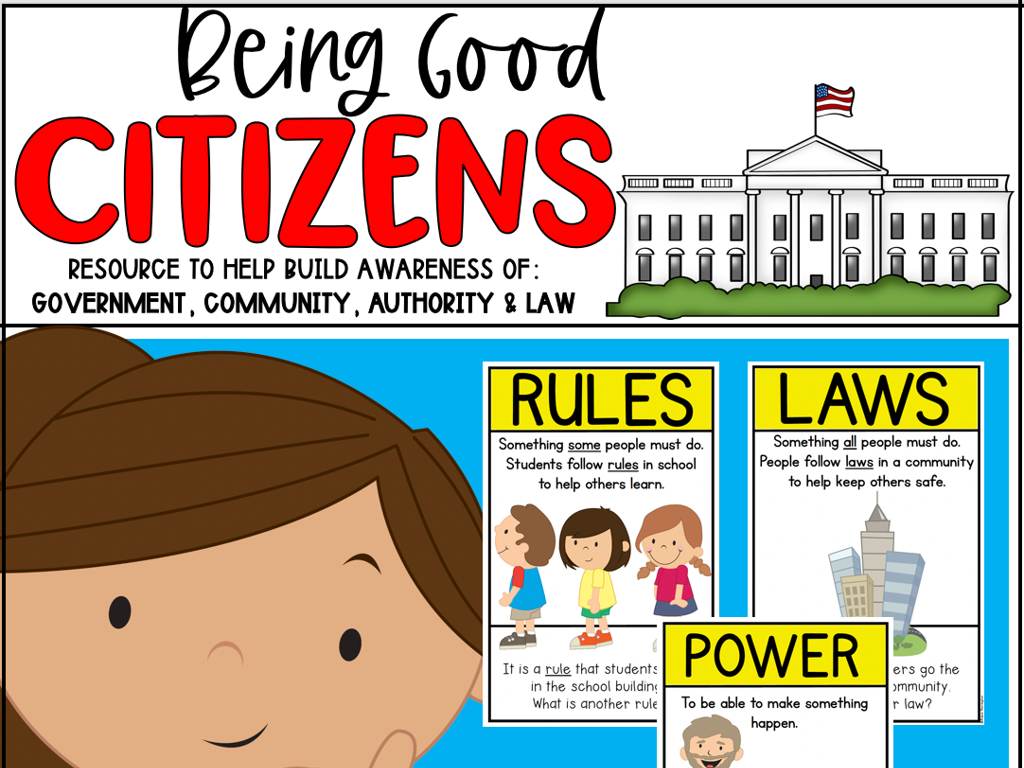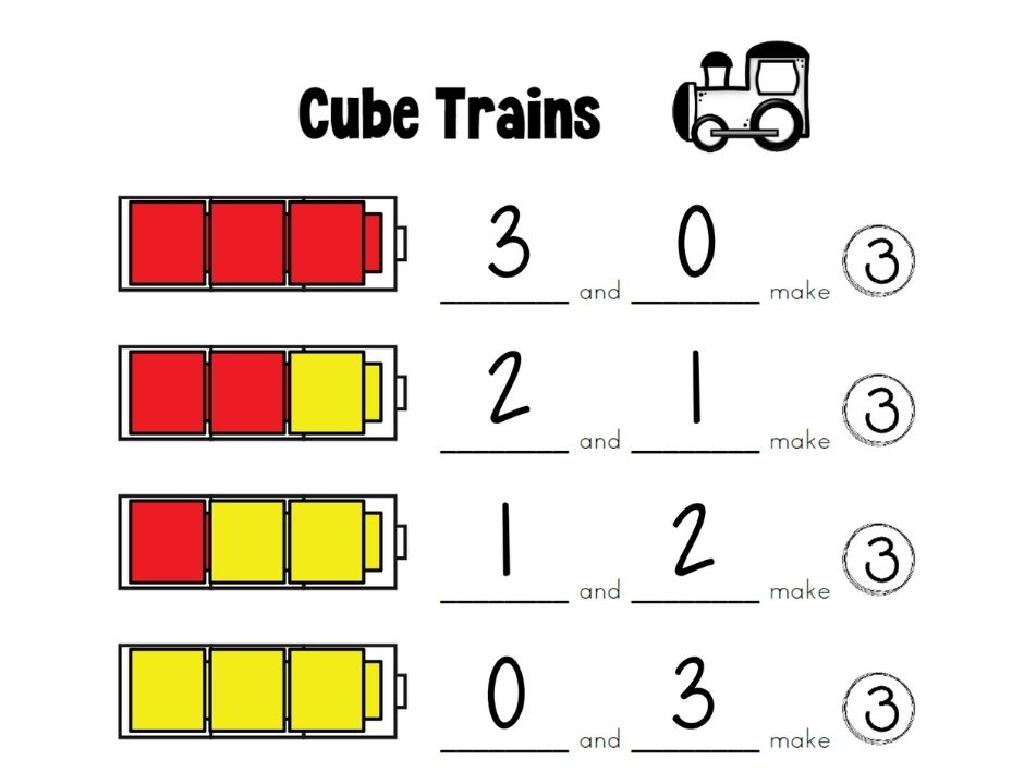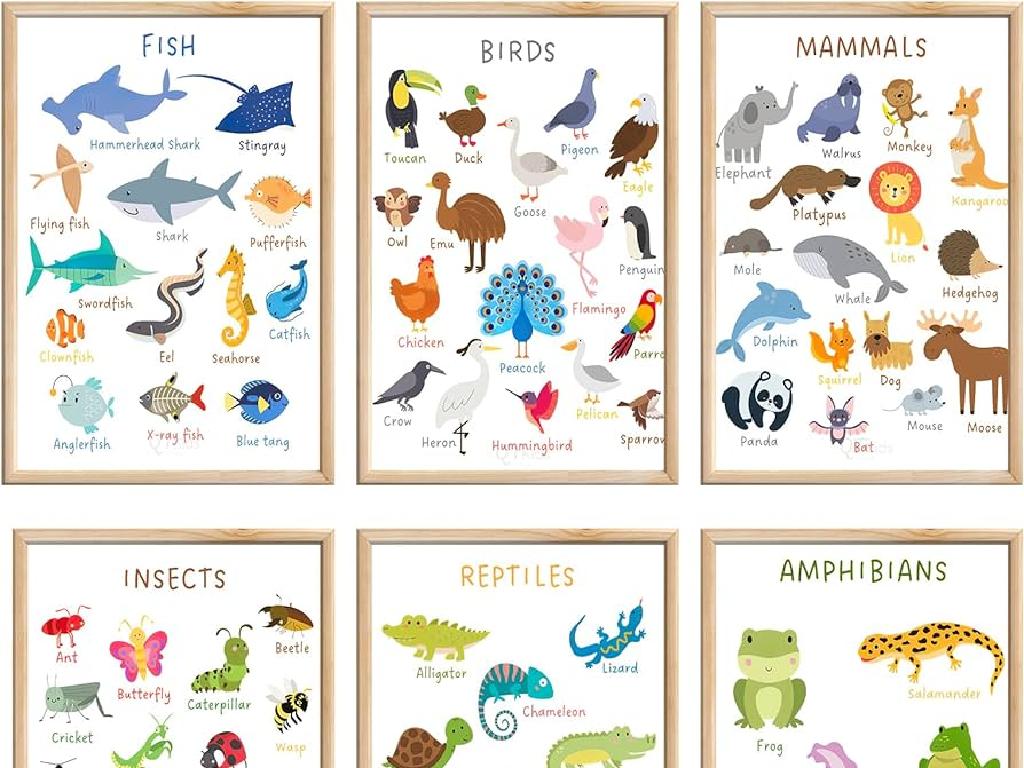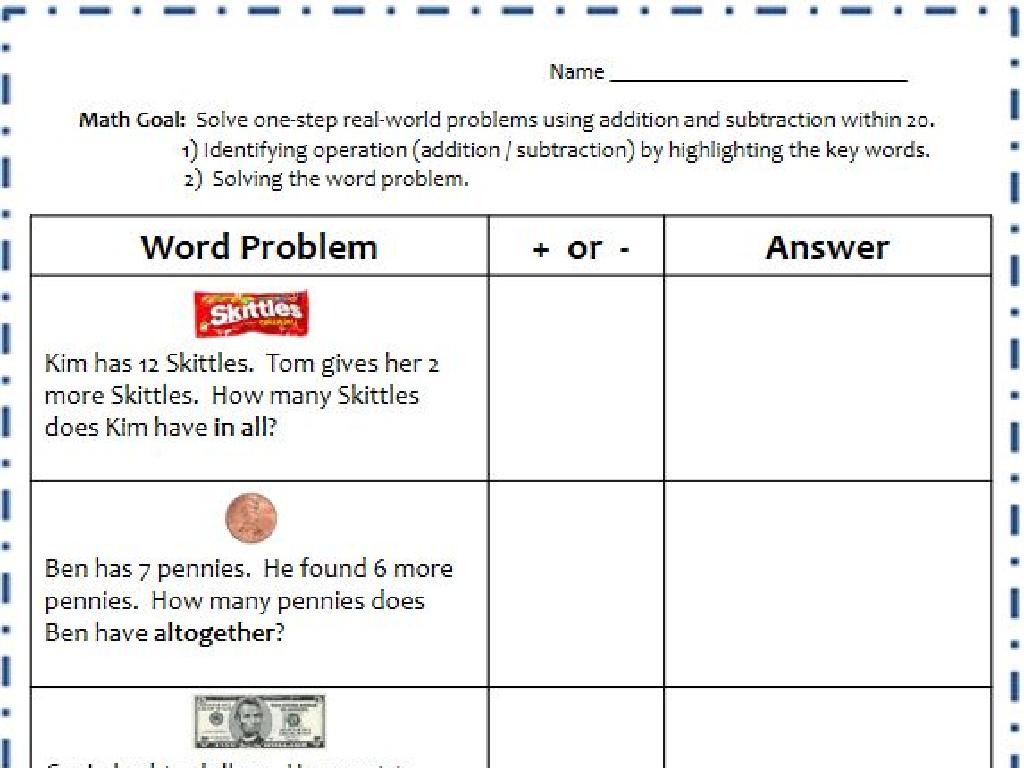Cell Part Functions: True Or False
Subject: Science
Grade: Fourth grade
Topic: Cells
Please LOG IN to download the presentation. Access is available to registered users only.
View More Content
Welcome to the World of Cells!
– Discover what a cell is
– The basic unit of life, building blocks for all organisms
– Learn why cells are vital
– Cells make up our body and keep us alive
– Explore cell part functions
– Each part of a cell has a special job, like the nucleus is the control center
– Engage in ‘True or False’ activity
– We’ll test our knowledge with a fun game
|
This slide introduces students to the concept of cells and their importance in all living organisms. Begin by explaining that cells are the smallest units of life, making up everything from tiny bacteria to large animals like elephants. Emphasize that without cells, life as we know it wouldn’t exist. Discuss the various functions of cell parts, such as how the mitochondria provide energy and how the cell membrane protects the cell. Conclude with an interactive ‘True or False’ game where students can apply their understanding of cell functions, fostering engagement and reinforcing the lesson’s key points.
Exploring Cell Parts and Their Functions
– Cells: Life’s Building Blocks
– Nucleus: The Control Center
– Like a principal’s office, directing all activities
– Mitochondria: Power Producers
– Like a power plant, providing energy for the cell
– Each Part Has a Unique Role
– Just like different rooms in a school have different uses
|
This slide introduces the basic concept of cells and their components to fourth-grade students. Begin by explaining that cells are the fundamental units of life, much like bricks are for a building. The nucleus can be compared to a principal’s office, overseeing the cell’s operations. Mitochondria are the powerhouses, similar to power plants, providing the energy needed for the cell to function. Emphasize that each part of the cell has a specific role, akin to how different rooms in a school serve different purposes. This analogy helps students relate to the material and understand the unique functions of cell parts. Encourage students to think of other cell parts as parts of their school to reinforce the concept.
The Nucleus: The Control Center of the Cell
– Nucleus directs cell activities
– Think of it as the cell’s boss!
– Contains DNA, life’s blueprint
– DNA determines how we look and grow.
– True or False: Energy production site?
– The nucleus does not produce energy; that’s the mitochondria’s job!
|
This slide introduces the nucleus as the central command center of the cell, directing all activities. It’s important for students to understand that the nucleus contains DNA, which is like a set of instructions for the cell’s function and the organism’s traits. Address the common misconception that the nucleus produces energy by explaining that this is actually the role of the mitochondria. Use relatable analogies, such as comparing the nucleus to the principal’s office in a school, to help students grasp the concept. Encourage discussion about the true or false statement to reinforce their understanding of the nucleus’ function.
Mitochondria: The Powerhouse of the Cell
– Mitochondria generate cell energy
– They create energy like a power plant
– Convert food into cell fuel
– Food is turned into energy through a process
– Store DNA: True or False?
– Mitochondria do not store DNA; that’s the nucleus’ job
|
This slide introduces the mitochondria and its function as the energy generator within the cell. It’s important to clarify that while mitochondria convert nutrients from the food we eat into energy that the cell can use, they do not store DNA. The true or false question at the end is designed to test the students’ understanding and to correct a common misconception. The nucleus is the organelle that stores DNA, not the mitochondria. Use this slide to emphasize the role of mitochondria and to clarify the distinct functions of different cell parts.
Cell Membrane: The Security Guard
– Protects the cell like a guard
– Controls substance movement
– Acts as a barrier, managing the flow of nutrients and waste
– Decides what exits the cell
– Just like a security guard decides who enters and leaves a building
– True or False: Gatekeeper role
|
The cell membrane is often compared to a security guard because of its role in protecting the cell from its surroundings and controlling what substances can enter and exit. It’s important for students to understand that the cell membrane is selective, meaning it doesn’t allow just anything to pass through; it only lets in what’s necessary for the cell’s survival and keeps out harmful substances. This slide will introduce the concept of the cell membrane and its functions, and the true or false statement will help reinforce the idea that the cell membrane has a decision-making role in the cell’s interactions with its environment.
Chloroplasts: The Food Producers
– Chloroplasts in plant cells
– Chloroplasts capture sunlight to make food
– Photosynthesis process
– Using sunlight, water, and CO2 to create glucose
– Animal cells and chloroplasts
– Do animals use chloroplasts for food? Think about it!
– True or False activity
|
This slide introduces chloroplasts and their role in photosynthesis, a process exclusive to plant cells. Chloroplasts use sunlight to convert water and carbon dioxide into glucose, which plants use for energy. The true or false activity is designed to challenge students’ understanding of the differences between plant and animal cells. For the activity, students will decide if the statement ‘Animal cells also have chloroplasts’ is true or false and justify their answer. This encourages critical thinking and comprehension of cell functions. The correct answer is ‘False,’ as animal cells do not have chloroplasts and cannot perform photosynthesis.
Let’s Review: Cell Part Functions
– Recap of cell part roles
– We learned about the nucleus, mitochondria, and more.
– Functions of each part
– Can you recall what the chloroplast does?
– Get set for True/False quiz
– True or False: The cell wall is found in animal cells.
– Reviewing helps us remember!
|
This slide is a recap of what we’ve learned about cell parts and their functions. Start by reviewing the different parts of a cell, such as the nucleus, mitochondria, chloroplasts, and cell wall, and discuss their roles. Ask the students to recall the function of each part to reinforce their understanding. Then, prepare them for a True or False quiz to test their knowledge. This activity will help solidify their learning and make the information more memorable. Encourage the students to think about why each part is important for the cell’s survival and how they all work together.
Cell Part Functions: True or False Challenge
– Test your knowledge on cell parts
– Answer true or false questions
– Is the nucleus the ‘brain’ of the cell? True or False?
– Discuss answers with classmates
– Share your thoughts on why you think it’s true or false
– Learn and have fun together
|
This activity is designed to engage students in a fun and interactive way to learn about cell part functions. The teacher will prepare a series of true or false questions related to cell parts and their functions. Students will answer these questions individually and then discuss their answers in small groups, explaining their reasoning. This will not only help them reinforce their understanding but also develop their communication skills. Possible activities include: 1) Matching cell parts to their functions, 2) Creating a poster with true or false facts, 3) Acting out the roles of different cell parts, 4) Drawing a cell and labeling true or false statements about each part, 5) Writing a short story incorporating true facts about cell functions.
Cell Exploration Wrap-Up and Homework
– Congratulations on your hard work!
– Homework: Draw and label a cell
– Use a blank paper to draw a cell’s shape
– Include all the parts we learned
– Remember to label parts like the nucleus, mitochondria, and more
– Show and tell your cell diagram next class
– We’ll discuss everyone’s drawings together
|
Today’s class was a success, and students have learned a lot about cell parts and their functions. For homework, they are tasked with drawing a cell and labeling its parts, which will help reinforce their understanding. Encourage creativity but also accuracy in their diagrams. Provide a quick recap of the main cell parts to ensure they remember what to include. Next class, there will be a show and tell, allowing students to share their work and learn from each other’s diagrams. This activity will not only assess their comprehension but also boost their presentation skills.






